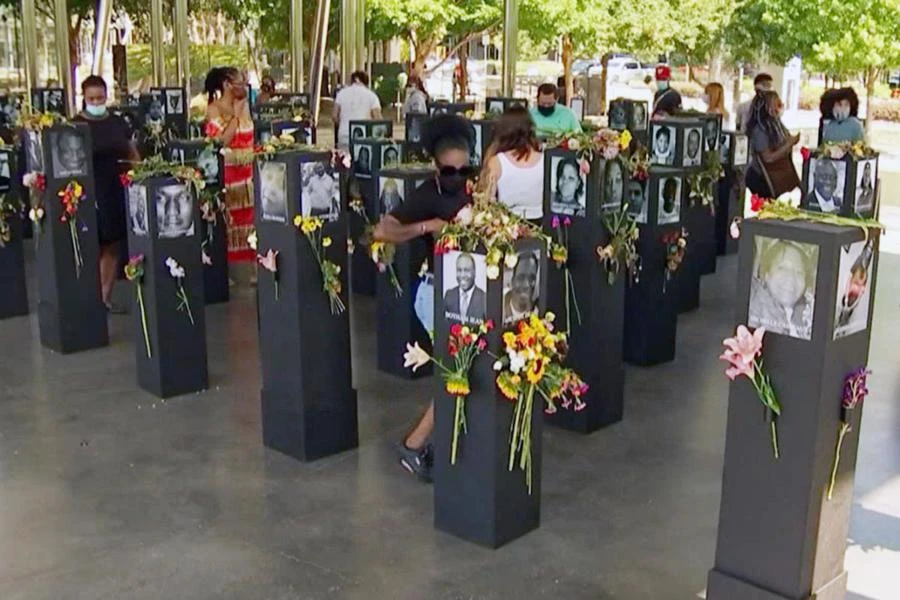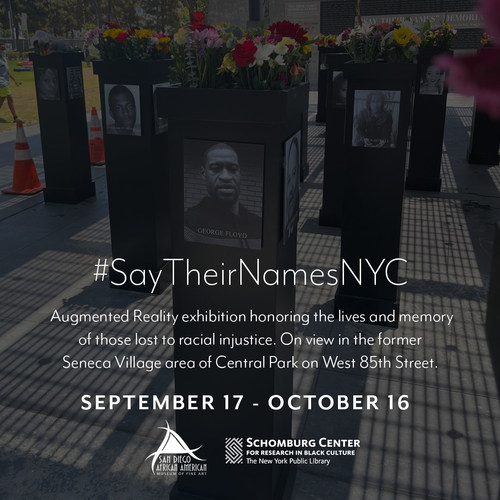NYC to host landmark exhibition honoring Black lives lost to racial injustice

By Claretta Bellamy
Seneca Village was once home to one of the largest Black settlements in the country, and now the historical New York City site will honor Black lives lost to racial injustice.
The Say Their Names Memorial, a national, grassroots initiative focused on honoring the many African Americans who died by acts of racism or racial injustice, will debut its augmented reality exhibition Sept. 17 in the Seneca Village area of Central Park on West 85th Street.
Produced by the San Diego African American Museum of Fine Art, the Say Their Names Memorial New York is in collaboration with the Schomburg Center for Research in Black Culture and the New York Urban League, among other New York City cultural institutions. The exhibition — which is described as an augmented reality experience combining digital photography, technology and art — will include 50 virtual pedestals bearing over 200 photos of Black people who died from racism spanning 200 years.
People featured in the memorial include Eric Garner, Emmett Till, George Floyd and Breonna Taylor, along with victims of the mass shooting at a Tops supermarket in Buffalo, New York, in May. Other Say Their Names memorials appear across the country, including in Seattle; Dallas; Portland, Oregon; and Hoboken, New Jersey.

“Racial violence has been a distinct part of American history since 1660,” Gaidi Finnie, the executive director of the San Diego African American Museum of Fine Art, or SDAAMFA, said in a statement. “While that violence has impacted every ethnic and racial group in the United States, it has had a particularly horrific effect on African American life ranging from revolts of the enslaved and lynchings to urban uprisings and calculated acts of murder. SDAAMFA is honored to bring this exhibition to New York City and dedicate it to the ongoing fight to end systemic racism.”
To participate, visitors must download a mobile application called Membit a geolocation augmented reality storytelling platform — on their electronic devices to get instructions, along with a map of the exhibition. Through the app, visitors can read about every person and the circumstances surrounding their deaths. They will also be able to access a screen-recording feature to share the faces and names of those in the memorial.
“One of the best things Augmented Reality can do is make the unseen, seen, providing access to this very significant exhibition through the use of a single piece of equipment most people own: their cell phones,” Jay Van Buren, the founder and CEO of Membit, said in a statement. “Through the combination of technology and the human sentiment, we hope this exhibition will inspire a movement towards change and a better way forward.”
Seneca Village was known for its thriving predominantly Black community that provided refuge for Black Americans wanting to escape racial discrimination in the mid-1800s. By 1857, all residents were forced to leave because of the state’s plan to use the land to build Central Park.
The exhibition will be open from Sept. 17 to Oct. 17.








